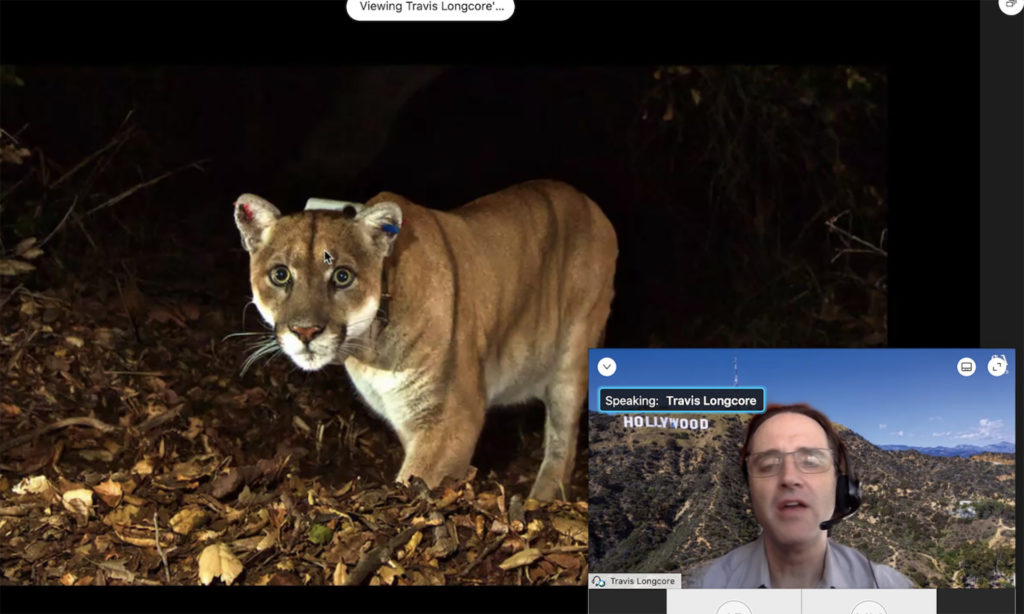Texas Master Naturalist attracts record attendance to 2020 meeting
AgriLife Extension program welcomes more than 1,170 participants virtually
More than 1,170 attendees tuned in virtually to the annual meeting hosted by the Texas Master Naturalist Program on Oct. 14-17 to learn about a variety of topics relating to nature, natural resource management and conservation.

The Texas Master Naturalist Program, co-sponsored by Texas A&M AgriLife Extension Service and Texas Parks and Wildlife Department, was established to develop a corps of well-informed volunteers to provide education, outreach and service dedicated to the beneficial management of natural resources and natural areas within their communities for Texas.
“We were blown away by the response from this year’s event,” Mary Pearl Meuth, assistant state coordinator for the Texas Master Naturalist Program, said. “We knew that hosting the annual meeting virtually was going to be a big shift for our regular attendees. Because of the transition, we were only expecting about 200-300 registrants. We hosted a few virtual coffee chats before the event to give potential attendees practice using the online platform and it was an overwhelming success.”
Among those in attendance at this year’s virtual meeting were certified Master Naturalists, Texas A&M AgriLife Research scientists and AgriLife Extension specialists, Texas Parks and Wildlife professionals, university faculty, community leaders and nature lovers from all over the state and nation.
In the wake of COVID-19, themes of resilience, adaptability and the importance of community rang through headsets and computer speakers as, for the first time in program history, participants tuned in from all across the country.
A week of learning and growth for participants
The four-day event featured 80 sessions for the record number of attendees to choose from on topics ranging from plant conservation, community engagement, birding, bats and light pollution to citizen science, wildlife photography and social media use.
The event also featured a variety of keynote speakers, including Jaime Gonzalez, program director with Houston Healthy Cities and the Texas Chapter of The Nature Conservancy; Merlin Tuttle, Ph.D., founder of Merlin Tuttle’s Bat Conservation; Travis Longcore, Ph.D., associate adjunct professor at the University of California Los Angeles Institute of the Environment and Sustainability; and Doug Tallamy, Ph.D., author and professor in the Department of Entomology and Wildlife Ecology at the University of Delaware.
Prior to the event, the Texas Master Naturalist Program provided attendees with the opportunity to partake in a day of remote field sessions, where five Houston-regional chapters led virtual explorations of must-see Texas locations for naturalists looking for outdoor destinations.
In the evenings, special programming was held, including quiz bowl competitions and a preview of the documentary film “Doc and Martha,” which highlighted one couple’s journey—Doc and Martha McAlister—as Master Naturalists and educators on Matagorda Island.
The program concluded with an annual award ceremony where winners from the chapter projects, photo, art and media contests were announced and Master Naturalists were honored for their service and dedication to the program.
Among those honored was Marie Asscherick from the Galveston Bay Area for her 15,000 hours of service to her surrounding communities through the Texas Master Naturalist program.
Over 300 attendees received milestone achievement awards at the event, which collectively represented over 195,000 hours of volunteer service.
Texas Master Naturalists remain resilient
Despite a year of unanticipated challenges, Texas Master Naturalist chapters and volunteers shared ways in which they continued to safely show up and share their love of nature with others amidst the pandemic.
“It is so inspiring to see all of the different ways chapters have coped with the pandemic and still found ways to learn and teach,” said Heartwood Chapter attendee Gwen Lanning.
As this year’s meeting adjourned, Texas Master Naturalists and conservationists across the state were left with a call to act—to be stewards in their local communities and to share the knowledge they had soaked up over the week with others.
“You are an important cog in the wheel of conservation,” featured speaker Tallamy told attendees.
While Texas Master Naturalists may be tying a bow on this year’s event, they are already planning ahead for next year. Those interested in attending next year’s annual meeting can mark their calendars for Oct. 21-24.
However, people don’t have to wait until next year to take action and exercise stewardship in their own communities. To learn more about becoming a Master Naturalist or get involved with a local chapter, visit the Texas Master Naturalist Program website for more information.
“We are excited to see how our Master Naturalists will incorporate what they’ve learned from this year’s meeting into their own communities to become agents for change and stewards of our state’s resources,” Meuth said.


